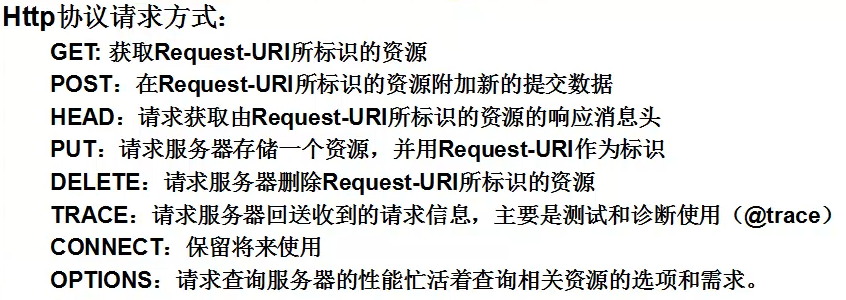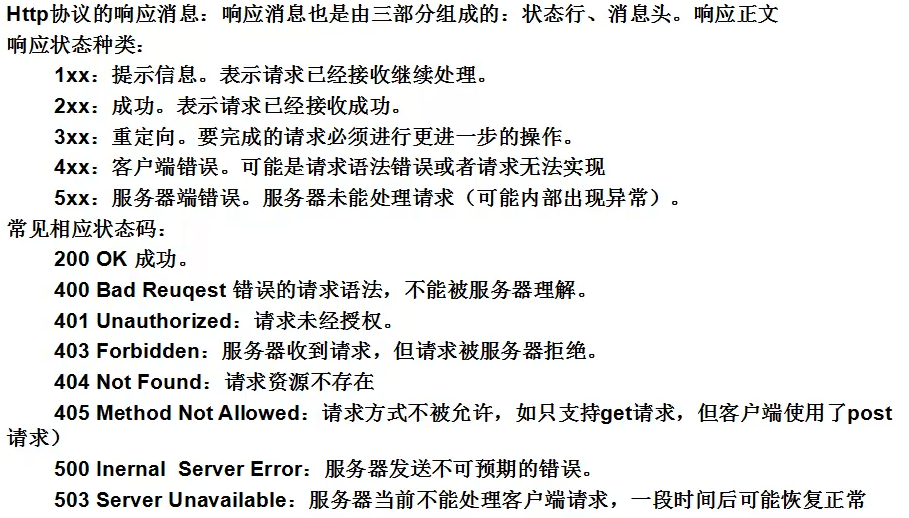JavaNetty心跳监控

import java.net.InetAddress;
import java.net.UnknownHostException;
import java.util.Map;
import java.util.Properties;
import org.hyperic.sigar.CpuInfo;
import org.hyperic.sigar.CpuPerc;
import org.hyperic.sigar.FileSystem;
import org.hyperic.sigar.FileSystemUsage;
import org.hyperic.sigar.Mem;
import org.hyperic.sigar.NetInterfaceConfig;
import org.hyperic.sigar.NetInterfaceStat;
import org.hyperic.sigar.OperatingSystem;
import org.hyperic.sigar.Sigar;
import org.hyperic.sigar.SigarException;
import org.hyperic.sigar.Swap;
import org.hyperic.sigar.Who; public class TestSigar {
public TestSigar() {
} public static void main(String[] args) {
try {
property();
System.out.println("----------------------------------");
cpu();
System.out.println("----------------------------------");
memory();
System.out.println("----------------------------------");
os();
System.out.println("----------------------------------");
who();
System.out.println("----------------------------------");
file();
System.out.println("----------------------------------");
net();
System.out.println("----------------------------------");
ethernet();
System.out.println("----------------------------------");
} catch (Exception var2) {
var2.printStackTrace();
} } private static void property() throws UnknownHostException {
Runtime r = Runtime.getRuntime();
Properties props = System.getProperties();
InetAddress addr = InetAddress.getLocalHost();
String ip = addr.getHostAddress();
Map<String, String> map = System.getenv();
String userName = (String)map.get("USERNAME");
String computerName = (String)map.get("COMPUTERNAME");
String userDomain = (String)map.get("USERDOMAIN");
System.out.println("用户名: " + userName);
System.out.println("计算机名: " + computerName);
System.out.println("计算机域名: " + userDomain);
System.out.println("本地ip地址: " + ip);
System.out.println("本地主机名: " + addr.getHostName());
System.out.println("JVM可以使用的总内存: " + r.totalMemory());
System.out.println("JVM可以使用的剩余内存: " + r.freeMemory());
System.out.println("JVM可以使用的处理器个数: " + r.availableProcessors());
System.out.println("Java的运行环境版本: " + props.getProperty("java.version"));
System.out.println("Java的运行环境供应商: " + props.getProperty("java.vendor"));
System.out.println("Java供应商的URL: " + props.getProperty("java.vendor.url"));
System.out.println("Java的安装路径: " + props.getProperty("java.home"));
System.out.println("Java的虚拟机规范版本: " + props.getProperty("java.vm.specification.version"));
System.out.println("Java的虚拟机规范供应商: " + props.getProperty("java.vm.specification.vendor"));
System.out.println("Java的虚拟机规范名称: " + props.getProperty("java.vm.specification.name"));
System.out.println("Java的虚拟机实现版本: " + props.getProperty("java.vm.version"));
System.out.println("Java的虚拟机实现供应商: " + props.getProperty("java.vm.vendor"));
System.out.println("Java的虚拟机实现名称: " + props.getProperty("java.vm.name"));
System.out.println("Java运行时环境规范版本: " + props.getProperty("java.specification.version"));
System.out.println("Java运行时环境规范供应商: " + props.getProperty("java.specification.vender"));
System.out.println("Java运行时环境规范名称: " + props.getProperty("java.specification.name"));
System.out.println("Java的类格式版本号: " + props.getProperty("java.class.version"));
System.out.println("Java的类路径: " + props.getProperty("java.class.path"));
System.out.println("加载库时搜索的路径列表: " + props.getProperty("java.library.path"));
System.out.println("默认的临时文件路径: " + props.getProperty("java.io.tmpdir"));
System.out.println("一个或多个扩展目录的路径: " + props.getProperty("java.ext.dirs"));
System.out.println("操作系统的名称: " + props.getProperty("os.name"));
System.out.println("操作系统的构架: " + props.getProperty("os.arch"));
System.out.println("操作系统的版本: " + props.getProperty("os.version"));
System.out.println("文件分隔符: " + props.getProperty("file.separator"));
System.out.println("路径分隔符: " + props.getProperty("path.separator"));
System.out.println("行分隔符: " + props.getProperty("line.separator"));
System.out.println("用户的账户名称: " + props.getProperty("user.name"));
System.out.println("用户的主目录: " + props.getProperty("user.home"));
System.out.println("用户的当前工作目录: " + props.getProperty("user.dir"));
} private static void memory() throws SigarException {
Sigar sigar = new Sigar();
Mem mem = sigar.getMem();
System.out.println("内存总量: " + mem.getTotal() / 1024L + "K av");
System.out.println("当前内存使用量: " + mem.getUsed() / 1024L + "K used");
System.out.println("当前内存剩余量: " + mem.getFree() / 1024L + "K free");
Swap swap = sigar.getSwap();
System.out.println("交换区总量: " + swap.getTotal() / 1024L + "K av");
System.out.println("当前交换区使用量: " + swap.getUsed() / 1024L + "K used");
System.out.println("当前交换区剩余量: " + swap.getFree() / 1024L + "K free");
} private static void cpu() throws SigarException {
Sigar sigar = new Sigar();
CpuInfo[] infos = sigar.getCpuInfoList();
CpuPerc[] cpuList = null;
System.out.println("cpu 总量参数情况:" + sigar.getCpu());
System.out.println("cpu 总百分比情况:" + sigar.getCpuPerc());
cpuList = sigar.getCpuPercList(); for(int i = 0; i < infos.length; ++i) {
CpuInfo info = infos[i];
System.out.println("第" + (i + 1) + "块CPU信息");
System.out.println("CPU的总量MHz: " + info.getMhz());
System.out.println("CPU生产商: " + info.getVendor());
System.out.println("CPU类别: " + info.getModel());
System.out.println("CPU缓存数量: " + info.getCacheSize());
printCpuPerc(cpuList[i]);
} } private static void printCpuPerc(CpuPerc cpu) {
System.out.println("CPU用户使用率: " + CpuPerc.format(cpu.getUser()));
System.out.println("CPU系统使用率: " + CpuPerc.format(cpu.getSys()));
System.out.println("CPU当前等待率: " + CpuPerc.format(cpu.getWait()));
System.out.println("CPU当前错误率: " + CpuPerc.format(cpu.getNice()));
System.out.println("CPU当前空闲率: " + CpuPerc.format(cpu.getIdle()));
System.out.println("CPU总的使用率: " + CpuPerc.format(cpu.getCombined()));
} private static void os() {
OperatingSystem OS = OperatingSystem.getInstance();
System.out.println("操作系统: " + OS.getArch());
System.out.println("操作系统CpuEndian(): " + OS.getCpuEndian());
System.out.println("操作系统DataModel(): " + OS.getDataModel());
System.out.println("操作系统的描述: " + OS.getDescription());
System.out.println("操作系统的卖主: " + OS.getVendor());
System.out.println("操作系统的卖主名: " + OS.getVendorCodeName());
System.out.println("操作系统名称: " + OS.getVendorName());
System.out.println("操作系统卖主类型: " + OS.getVendorVersion());
System.out.println("操作系统的版本号: " + OS.getVersion());
} private static void who() throws SigarException {
Sigar sigar = new Sigar();
Who[] who = sigar.getWhoList();
if (who != null && who.length > 0) {
for(int i = 0; i < who.length; ++i) {
Who _who = who[i];
System.out.println("用户控制台: " + _who.getDevice());
System.out.println("用户host: " + _who.getHost());
System.out.println("当前系统进程表中的用户名: " + _who.getUser());
}
} } private static void file() throws Exception {
Sigar sigar = new Sigar();
FileSystem[] fslist = sigar.getFileSystemList();
int i = 0; while(i < fslist.length) {
System.out.println("分区的盘符名称" + i);
FileSystem fs = fslist[i];
System.out.println("盘符名称: " + fs.getDevName());
System.out.println("盘符路径: " + fs.getDirName());
System.out.println("盘符标志: " + fs.getFlags());
System.out.println("盘符类型: " + fs.getSysTypeName());
System.out.println("盘符类型名: " + fs.getTypeName());
System.out.println("盘符文件系统类型: " + fs.getType());
FileSystemUsage usage = null;
usage = sigar.getFileSystemUsage(fs.getDirName());
switch(fs.getType()) {
case 2:
System.out.println(fs.getDevName() + "总大小: " + usage.getTotal() + "KB");
System.out.println(fs.getDevName() + "剩余大小: " + usage.getFree() + "KB");
System.out.println(fs.getDevName() + "可用大小: " + usage.getAvail() + "KB");
System.out.println(fs.getDevName() + "已经使用量: " + usage.getUsed() + "KB");
double usePercent = usage.getUsePercent() * 100.0D;
System.out.println(fs.getDevName() + "资源的利用率: " + usePercent + "%");
case 0:
case 1:
case 3:
case 4:
case 5:
case 6:
default:
System.out.println(fs.getDevName() + "读出: " + usage.getDiskReads());
System.out.println(fs.getDevName() + "写入: " + usage.getDiskWrites());
++i;
}
} } private static void net() throws Exception {
Sigar sigar = new Sigar();
String[] ifNames = sigar.getNetInterfaceList(); for(int i = 0; i < ifNames.length; ++i) {
String name = ifNames[i];
NetInterfaceConfig ifconfig = sigar.getNetInterfaceConfig(name);
System.out.println("网络设备名: " + name);
System.out.println("IP地址: " + ifconfig.getAddress());
System.out.println("子网掩码: " + ifconfig.getNetmask());
if ((ifconfig.getFlags() & 1L) <= 0L) {
System.out.println("!IFF_UP...skipping getNetInterfaceStat");
} else {
NetInterfaceStat ifstat = sigar.getNetInterfaceStat(name);
System.out.println(name + "接收的总包裹数:" + ifstat.getRxPackets());
System.out.println(name + "发送的总包裹数:" + ifstat.getTxPackets());
System.out.println(name + "接收到的总字节数:" + ifstat.getRxBytes());
System.out.println(name + "发送的总字节数:" + ifstat.getTxBytes());
System.out.println(name + "接收到的错误包数:" + ifstat.getRxErrors());
System.out.println(name + "发送数据包时的错误数:" + ifstat.getTxErrors());
System.out.println(name + "接收时丢弃的包数:" + ifstat.getRxDropped());
System.out.println(name + "发送时丢弃的包数:" + ifstat.getTxDropped());
}
} } private static void ethernet() throws SigarException {
Sigar sigar = null;
sigar = new Sigar();
String[] ifaces = sigar.getNetInterfaceList(); for(int i = 0; i < ifaces.length; ++i) {
NetInterfaceConfig cfg = sigar.getNetInterfaceConfig(ifaces[i]);
if (!"127.0.0.1".equals(cfg.getAddress()) && (cfg.getFlags() & 8L) == 0L && !"00:00:00:00:00:00".equals(cfg.getHwaddr())) {
System.out.println(cfg.getName() + "IP地址:" + cfg.getAddress());
System.out.println(cfg.getName() + "网关广播地址:" + cfg.getBroadcast());
System.out.println(cfg.getName() + "网卡MAC地址:" + cfg.getHwaddr());
System.out.println(cfg.getName() + "子网掩码:" + cfg.getNetmask());
System.out.println(cfg.getName() + "网卡描述信息:" + cfg.getDescription());
System.out.println(cfg.getName() + "网卡类型" + cfg.getType());
}
} }
}
import io.netty.channel.ChannelHandlerAdapter;
import io.netty.channel.ChannelHandlerContext;
import io.netty.util.ReferenceCountUtil;
import java.net.InetAddress;
import java.util.HashMap;
import java.util.concurrent.Executors;
import java.util.concurrent.ScheduledExecutorService;
import java.util.concurrent.ScheduledFuture;
import java.util.concurrent.TimeUnit;
import org.hyperic.sigar.CpuPerc;
import org.hyperic.sigar.Mem;
import org.hyperic.sigar.Sigar; public class ClienHeartBeattHandler extends ChannelHandlerAdapter {
private ScheduledExecutorService scheduler = Executors.newScheduledThreadPool(1);
private ScheduledFuture<?> heartBeat;
private InetAddress addr;
private static final String SUCCESS_KEY = "auth_success_key"; public ClienHeartBeattHandler() {
} public void channelActive(ChannelHandlerContext ctx) throws Exception {
this.addr = InetAddress.getLocalHost();
String ip = this.addr.getHostAddress();
String key = "1234";
String auth = ip + "," + key;
ctx.writeAndFlush(auth);
} public void channelRead(ChannelHandlerContext ctx, Object msg) throws Exception {
try {
if (msg instanceof String) {
String ret = (String)msg;
if ("auth_success_key".equals(ret)) {
this.heartBeat = this.scheduler.scheduleWithFixedDelay(new ClienHeartBeattHandler.HeartBeatTask(ctx), 0L, 2L, TimeUnit.SECONDS);
System.out.println(msg);
} else {
System.out.println(msg);
}
}
} finally {
ReferenceCountUtil.release(msg);
} } private class HeartBeatTask implements Runnable {
private final ChannelHandlerContext ctx; public HeartBeatTask(ChannelHandlerContext ctx) {
this.ctx = ctx;
} public void run() {
try {
RequestInfo info = new RequestInfo();
info.setIp(ClienHeartBeattHandler.this.addr.getHostAddress());
Sigar sigar = new Sigar();
CpuPerc cpuPerc = sigar.getCpuPerc();
HashMap<String, Object> cpuPercMap = new HashMap();
cpuPercMap.put("combined", cpuPerc.getCombined());
cpuPercMap.put("user", cpuPerc.getUser());
cpuPercMap.put("sys", cpuPerc.getSys());
cpuPercMap.put("wait", cpuPerc.getWait());
cpuPercMap.put("idle", cpuPerc.getIdle());
Mem mem = sigar.getMem();
HashMap<String, Object> memoryMap = new HashMap();
memoryMap.put("total", mem.getTotal() / 1024L);
memoryMap.put("used", mem.getUsed() / 1024L);
memoryMap.put("free", mem.getFree() / 1024L);
info.setCpuPercMap(cpuPercMap);
info.setMemoryMap(memoryMap);
this.ctx.writeAndFlush(info);
} catch (Exception var7) {
var7.printStackTrace();
} } public void exceptionCaught(ChannelHandlerContext ctx, Throwable cause) throws Exception {
cause.printStackTrace();
if (ClienHeartBeattHandler.this.heartBeat != null) {
ClienHeartBeattHandler.this.heartBeat.cancel(true);
ClienHeartBeattHandler.this.heartBeat = null;
} ctx.fireExceptionCaught(cause);
}
}
}
import io.netty.bootstrap.Bootstrap;
import io.netty.channel.ChannelFuture;
import io.netty.channel.ChannelHandler;
import io.netty.channel.ChannelInitializer;
import io.netty.channel.EventLoopGroup;
import io.netty.channel.nio.NioEventLoopGroup;
import io.netty.channel.socket.SocketChannel;
import io.netty.channel.socket.nio.NioSocketChannel; public class Client {
public Client() {
} public static void main(String[] args) throws Exception {
EventLoopGroup group = new NioEventLoopGroup();
Bootstrap b = new Bootstrap();
((Bootstrap)((Bootstrap)b.group(group)).channel(NioSocketChannel.class)).handler(new ChannelInitializer<SocketChannel>() {
protected void initChannel(SocketChannel sc) throws Exception {
sc.pipeline().addLast(new ChannelHandler[]{MarshallingCodeCFactory.buildMarshallingDecoder()});
sc.pipeline().addLast(new ChannelHandler[]{MarshallingCodeCFactory.buildMarshallingEncoder()});
sc.pipeline().addLast(new ChannelHandler[]{new ClienHeartBeattHandler()});
}
});
ChannelFuture cf = b.connect("127.0.0.1", 8765).sync();
cf.channel().closeFuture().sync();
group.shutdownGracefully();
}
}
import io.netty.handler.codec.marshalling.DefaultMarshallerProvider;
import io.netty.handler.codec.marshalling.DefaultUnmarshallerProvider;
import io.netty.handler.codec.marshalling.MarshallerProvider;
import io.netty.handler.codec.marshalling.MarshallingDecoder;
import io.netty.handler.codec.marshalling.MarshallingEncoder;
import io.netty.handler.codec.marshalling.UnmarshallerProvider;
import org.jboss.marshalling.MarshallerFactory;
import org.jboss.marshalling.Marshalling;
import org.jboss.marshalling.MarshallingConfiguration; public final class MarshallingCodeCFactory {
public MarshallingCodeCFactory() {
} public static MarshallingDecoder buildMarshallingDecoder() {
MarshallerFactory marshallerFactory = Marshalling.getProvidedMarshallerFactory("serial");
MarshallingConfiguration configuration = new MarshallingConfiguration();
configuration.setVersion(5);
UnmarshallerProvider provider = new DefaultUnmarshallerProvider(marshallerFactory, configuration);
MarshallingDecoder decoder = new MarshallingDecoder(provider, 1048576);
return decoder;
} public static MarshallingEncoder buildMarshallingEncoder() {
MarshallerFactory marshallerFactory = Marshalling.getProvidedMarshallerFactory("serial");
MarshallingConfiguration configuration = new MarshallingConfiguration();
configuration.setVersion(5);
MarshallerProvider provider = new DefaultMarshallerProvider(marshallerFactory, configuration);
MarshallingEncoder encoder = new MarshallingEncoder(provider);
return encoder;
}
}
import java.io.Serializable;
import java.util.HashMap; public class RequestInfo implements Serializable {
private String ip;
private HashMap<String, Object> cpuPercMap;
private HashMap<String, Object> memoryMap; public RequestInfo() {
} public String getIp() {
return this.ip;
} public void setIp(String ip) {
this.ip = ip;
} public HashMap<String, Object> getCpuPercMap() {
return this.cpuPercMap;
} public void setCpuPercMap(HashMap<String, Object> cpuPercMap) {
this.cpuPercMap = cpuPercMap;
} public HashMap<String, Object> getMemoryMap() {
return this.memoryMap;
} public void setMemoryMap(HashMap<String, Object> memoryMap) {
this.memoryMap = memoryMap;
}
}
import io.netty.bootstrap.ServerBootstrap;
import io.netty.channel.ChannelFuture;
import io.netty.channel.ChannelHandler;
import io.netty.channel.ChannelInitializer;
import io.netty.channel.ChannelOption;
import io.netty.channel.EventLoopGroup;
import io.netty.channel.nio.NioEventLoopGroup;
import io.netty.channel.socket.SocketChannel;
import io.netty.channel.socket.nio.NioServerSocketChannel;
import io.netty.handler.logging.LogLevel;
import io.netty.handler.logging.LoggingHandler; public class Server {
public Server() {
} public static void main(String[] args) throws Exception {
EventLoopGroup pGroup = new NioEventLoopGroup();
EventLoopGroup cGroup = new NioEventLoopGroup();
ServerBootstrap b = new ServerBootstrap();
((ServerBootstrap)((ServerBootstrap)((ServerBootstrap)b.group(pGroup, cGroup).channel(NioServerSocketChannel.class)).option(ChannelOption.SO_BACKLOG, 1024)).handler(new LoggingHandler(LogLevel.INFO))).childHandler(new ChannelInitializer<SocketChannel>() {
protected void initChannel(SocketChannel sc) throws Exception {
sc.pipeline().addLast(new ChannelHandler[]{MarshallingCodeCFactory.buildMarshallingDecoder()});
sc.pipeline().addLast(new ChannelHandler[]{MarshallingCodeCFactory.buildMarshallingEncoder()});
sc.pipeline().addLast(new ChannelHandler[]{new ServerHeartBeatHandler()});
}
});
ChannelFuture cf = b.bind(8765).sync();
cf.channel().closeFuture().sync();
pGroup.shutdownGracefully();
cGroup.shutdownGracefully();
}
}
import io.netty.channel.ChannelFutureListener;
import io.netty.channel.ChannelHandlerAdapter;
import io.netty.channel.ChannelHandlerContext;
import java.util.HashMap; public class ServerHeartBeatHandler extends ChannelHandlerAdapter {
private static HashMap<String, String> AUTH_IP_MAP = new HashMap();
private static final String SUCCESS_KEY = "auth_success_key"; static {
AUTH_IP_MAP.put("192.168.1.200", "1234");
} public ServerHeartBeatHandler() {
} private boolean auth(ChannelHandlerContext ctx, Object msg) {
String[] ret = ((String)msg).split(",");
String auth = (String)AUTH_IP_MAP.get(ret[0]);
if (auth != null && auth.equals(ret[1])) {
ctx.writeAndFlush("auth_success_key");
return true;
} else {
ctx.writeAndFlush("auth failure !").addListener(ChannelFutureListener.CLOSE);
return false;
}
} public void channelRead(ChannelHandlerContext ctx, Object msg) throws Exception {
if (msg instanceof String) {
this.auth(ctx, msg);
} else if (msg instanceof RequestInfo) {
RequestInfo info = (RequestInfo)msg;
System.out.println("--------------------------------------------");
System.out.println("当前主机ip为: " + info.getIp());
System.out.println("当前主机cpu情况: ");
HashMap<String, Object> cpu = info.getCpuPercMap();
System.out.println("总使用率: " + cpu.get("combined"));
System.out.println("用户使用率: " + cpu.get("user"));
System.out.println("系统使用率: " + cpu.get("sys"));
System.out.println("等待率: " + cpu.get("wait"));
System.out.println("空闲率: " + cpu.get("idle"));
System.out.println("当前主机memory情况: ");
HashMap<String, Object> memory = info.getMemoryMap();
System.out.println("内存总量: " + memory.get("total"));
System.out.println("当前内存使用量: " + memory.get("used"));
System.out.println("当前内存剩余量: " + memory.get("free"));
System.out.println("--------------------------------------------");
ctx.writeAndFlush("info received!");
} else {
ctx.writeAndFlush("connect failure!").addListener(ChannelFutureListener.CLOSE);
} }
}
import java.util.concurrent.Executors;
import java.util.concurrent.ScheduledExecutorService;
import java.util.concurrent.TimeUnit; public class TestTimeJob {
public TestTimeJob() {
} public static void main(String[] args) throws Exception {
Temp command = new Temp();
ScheduledExecutorService scheduler = Executors.newScheduledThreadPool(1);
scheduler.scheduleWithFixedDelay(command, 2L, 3L, TimeUnit.SECONDS);
}
}




JavaNetty心跳监控的更多相关文章
- Netty 编解码技术 数据通信和心跳监控案例
Netty 编解码技术 数据通信和心跳监控案例 多台服务器之间在进行跨进程服务调用时,需要使用特定的编解码技术,对需要进行网络传输的对象做编码和解码操作,以便完成远程调用.Netty提供了完善,易扩展 ...
- MySQL配置HeartBeat实现心跳监控和浮动IP
1. 初始化环境配置 /sbin/chkconfig --add mysqld /sbin/chkconfig mysqld on ln -s /usr/local/mysql/bin/mysql / ...
- 利用WCF的双工通讯实现一个简单的心跳监控系统
何为心跳监控系统? 故名思义,就是监控某个或某些个程序的运行状态,就好比医院里面的心跳监视仪一样,能够随时显示病人的心跳情况. 心跳监控的目的是什么? 与医院里面的心跳监视仪目的类似,监控程序运行状态 ...
- 利用WCF的双工通讯实现一个简单的心跳监控系统 z
利用WCF的双工通讯实现一个简单的心跳监控系统 http://www.cnblogs.com/zuowj/p/5761011.html 何为心跳监控系统? 故名思义,就是监控某个或某些个程序的运行状态 ...
- mysql主从同步(3)-percona-toolkit工具(数据一致性监测、延迟监控)使用梳理
转自:http://www.cnblogs.com/kevingrace/p/6261091.html 在mysql工作中接触最多的就是mysql replication mysql在复制方面还是会有 ...
- 【MySQL】常用监控指标及监控方法
对之前生产中使用过的MySQL数据库监控指标做个小结. 指标分类 指标名称 指标说明 性能类指标 QPS 数据库每秒处理的请求数量 TPS 数据库每秒处理的事务数量 并发数 数据库实例当前并行处理的 ...
- Netty实践二(心跳检测)
我们使用Socket通信一般经常会处理多个服务器之间的心跳检测,一般来讲,我们去维护服务器集群,肯定要有一台或几台服务器主机(Master),然后还应该有N台(Slave),那么我们的主机肯定要时时刻 ...
- MySQL 监控-innotop
innotop 编写者Balon Schwartz,<高性能MySQL>的作者之一. innotop的作用为实时地展示服务器正在发生的事情,监控innodb,监控多个MySQL实例,是一款 ...
- Netty学习篇④-心跳机制及断线重连
心跳检测 前言 客户端和服务端的连接属于socket连接,也属于长连接,往往会存在客户端在连接了服务端之后就没有任何操作了,但还是占用了一个连接:当越来越多类似的客户端出现就会浪费很多连接,netty ...
随机推荐
- web 视频播放器clappr 相关
https://github.com/tjenkinson/clappr-thumbnails-plugin/ https://github.com/andrefilimono/clappr-flvj ...
- Spring AOP的实现记录操作日志
适用场景: 记录接口方法的执行情况,记录相关状态到日志中. 注解类:LogTag.java package com.lichmama.spring.annotation; import java.la ...
- SpringBoot——读取配置文件@Value和@Configuration比较
1.@Configuration package com.xgcd.springboot.bean; import org.springframework.boot.context.propertie ...
- phpexcel中文手册(转)
首先到phpexcel官网上下载最新的phpexcel类,下周解压缩一个classes文件夹,里面包含了PHPExcel.php和PHPExcel的文件夹,这个类文件和文件夹是我们需要的,把class ...
- 这42个Python小例子,太走心
告别枯燥,60秒学会一个Python小例子.奔着此出发点,我在过去1个月,将平时经常使用的代码段换为小例子,分享出来后受到大家的喜欢. 一.基本操作 1 链式比较 i = 3print(1 < ...
- 如何将整数转换为timespan
可以使用From方法,这些方法可将Days / Days / minutes / seconds / milliseconds / ticks转换为TimeSpam格式,如下所示: TimeSpan ...
- 【VS开发】MFC多显示器适配显示设置
由于工程需要在多个显示器上显示不同类容,故查找了一些资料来满足这个功能.在VC中分为三步来操作:检测显示器个数:读取屏幕分辨率和其他参数:设置程序的显示坐标. 第一步:检测屏幕个数 网上查找到的通用方 ...
- QT--学习疑惑探索
用C++定义了一个类,并注册到qml文件中,但是这个类只能用Quickview进行显示,用其他方法好像不行. 启发: 1 window控件类是没有parent的widget. 2 m_view = ...
- mac远程连接linux 服务器桌面by VNC
为了远程使用Linux服务器,折腾了一个下午.最终看来还是用vnc最简单了. 实验室有两台强劲的Linux服务器用来做研究.之前我一直都是用ssh登到服务器上去码代码,反应速度很快,感觉很不错.但是因 ...
- TCP协议有几大计时器?
1)超时重传计时器 目的:避免无限等待确认报文 创建时间:在发送TCP报文段时,会为该报文段设置一个超时重传计时器 可能发生的情况:在超时时间到达之前,收到了该报文段的确认则撤销计时器,否则重传该报文 ...
